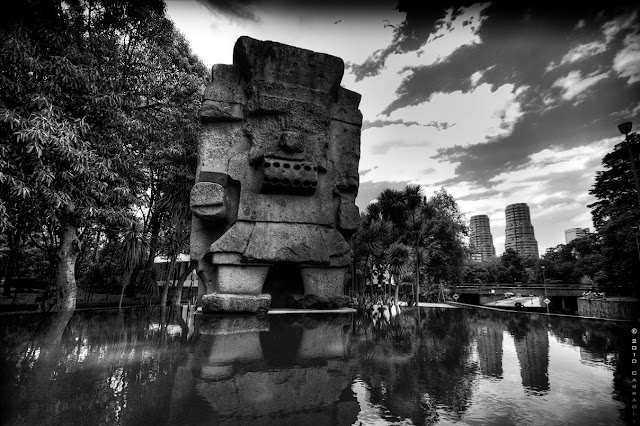

The Mexico City Metropolitan Cathedral is the largest and oldest cathedral in the Americas, it is situated atop the former Aztec sacred precinct near the Templo Mayor on the northern side of the main square. Here, two views of people seeing the underworld (aztec ruins) in 3 times, Modern, Colonial and Pre-hispanic.
The Aztec Mythology and their Underworld, Mictlan.In Aztec belief, the surface of the earth was a thin crust between the material (apparent) reality and the real world of spirit. Death was not taken at face value in Aztec religion, but was seen as the essence of life itself and the creation of a renewed beginning, a Beginning and an End at the same time - an unbroken cycle. According to the shaman, everything is part of the same life force. Birth was an emerging from this world of spirit and Death was a return back into it. In this unending cycle, the crops died and were reborn - that is, if the spirit world allowed it.
Mictlan is the lowest layer of the underworld, situated in the north. Every soul, except those of fallen warriors and women who died giving birth, have to descend to the underworld. Here, their souls will find eternal rest. However, they first have to make the dangerous journey to Mictlan. At the burial, the deceased are given magical powers and with the help of the god Xolotl, they are able to make this journey safely. The ruler of this underworld is
Mictlantecuhtli.
music+imageGracias por su visita / Thanks for visiting.





